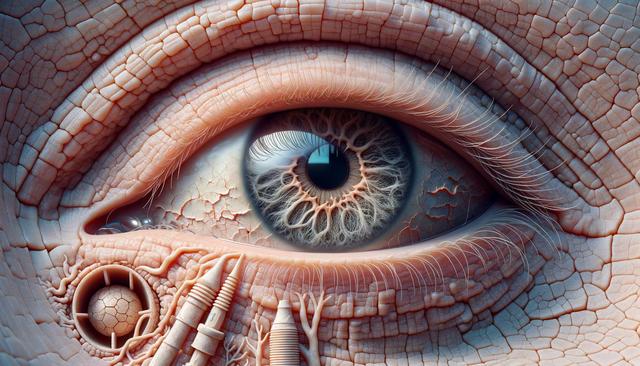Understanding Dry Eye Treatment Options: A Guide to Relief and Prevention
Dry eye syndrome can significantly impact daily comfort, but effective treatments are available to manage symptoms and improve eye health.

What Is Dry Eye Syndrome?
Dry eye syndrome is a common condition that occurs when your eyes do not produce enough tears or when the tears evaporate too quickly. This leads to inflammation and irritation of the eye surface, resulting in discomfort and visual disturbances. The condition can be temporary or chronic, and it often affects people who spend long hours staring at screens, wear contact lenses, or live in dry or windy climates. Hormonal changes, certain medications, and underlying health issues can also contribute to its development.
Symptoms of dry eye can vary from mild to severe and commonly include:
- A stinging or burning sensation in the eyes
- Redness or irritation, especially after screen use
- Sensitivity to light
- A feeling of something gritty in the eyes
- Blurred vision or eye fatigue
Understanding the root causes of dry eye is essential for selecting the most effective treatment, which can range from lifestyle changes to medical interventions.
Over-the-Counter Solutions
Many people start with over-the-counter (OTC) options to manage dry eye symptoms. These treatments are accessible and can offer relief for mild to moderate cases. Artificial tears are among the most commonly used OTC remedies. They help to supplement natural tear production and provide moisture to the eye surface. Some artificial tears are preservative-free, which can be beneficial for those with sensitive eyes or who use drops frequently.
Other OTC products and strategies include:
- Lubricating eye gels or ointments for overnight use
- Warm compresses to unclog oil glands in the eyelids
- Eyelid scrubs to maintain eyelid hygiene
- Humidifiers to add moisture to indoor air
While these options can be effective, they may not address the underlying causes of dry eye. If symptoms persist despite regular use of these products, it may be time to explore more advanced treatments with the help of an eye care professional.
Prescription Treatments and Medical Procedures
For chronic or more severe cases of dry eye, prescription medications and in-office procedures may offer better symptom control. Anti-inflammatory eye drops, such as those containing cyclosporine or lifitegrast, can help reduce inflammation and increase tear production. In some cases, corticosteroid eye drops may be prescribed for short-term relief.
Other medical treatment options include:
- Punctal plugs: Small devices inserted into tear ducts to reduce tear drainage
- Meibomian gland expression: A procedure to unclog oil glands in the eyelids
- Intense pulsed light (IPL) therapy: Used to treat meibomian gland dysfunction
- Autologous serum drops: Made from the patient’s own blood serum to promote healing
These treatments are usually recommended after a thorough eye exam and diagnosis by an ophthalmologist or optometrist. They are tailored to the individual’s specific condition and may be combined with lifestyle changes for optimal results.
Lifestyle Adjustments to Manage Dry Eye
In addition to medical treatments, making certain lifestyle adjustments can help prevent dry eye symptoms from worsening. These changes not only support eye health but can also enhance the effectiveness of other treatments.
Helpful lifestyle changes include:
- Taking regular breaks during screen time (the 20-20-20 rule: every 20 minutes, look at something 20 feet away for 20 seconds)
- Wearing wraparound sunglasses to protect eyes from wind and sun
- Staying hydrated throughout the day
- Maintaining a balanced diet rich in omega-3 fatty acids
- Avoiding exposure to smoke or dry environments whenever possible
Proper eyelid hygiene is also important. Regularly cleaning the eyelid margins can help prevent blockages in the oil glands that contribute to dry eye symptoms. These steps are particularly vital for individuals who are prone to blepharitis or other eyelid conditions.
When to Seek Professional Help
While mild dry eye symptoms can often be managed with at-home treatments, there are times when professional care is necessary. If you experience persistent discomfort, vision changes, or symptoms that interfere with daily activities, it’s important to consult an eye care provider. Delaying treatment can lead to complications such as damage to the corneal surface or increased risk of infection.
During an eye examination, the specialist may perform tests to assess tear production, tear film stability, and the condition of the meibomian glands. Based on the diagnosis, a customized treatment plan will be developed. This plan may include a combination of therapies such as prescription drops, in-office procedures, and guidance on lifestyle modifications.
Early intervention and consistent management can greatly improve quality of life for individuals with dry eye syndrome. Monitoring your symptoms and following your eye care provider’s advice are key to preventing long-term damage and maintaining eye comfort.
Conclusion: Taking Control of Dry Eye
Dry eye syndrome is a manageable condition with a wide range of treatment options available. From simple over-the-counter solutions to advanced medical therapies, individuals can find relief by understanding the causes of their symptoms and taking the appropriate steps. Incorporating healthy habits and seeking professional guidance when needed ensures that dry eye does not interfere with daily life. By staying informed and proactive, you can protect your vision and maintain long-term eye health.